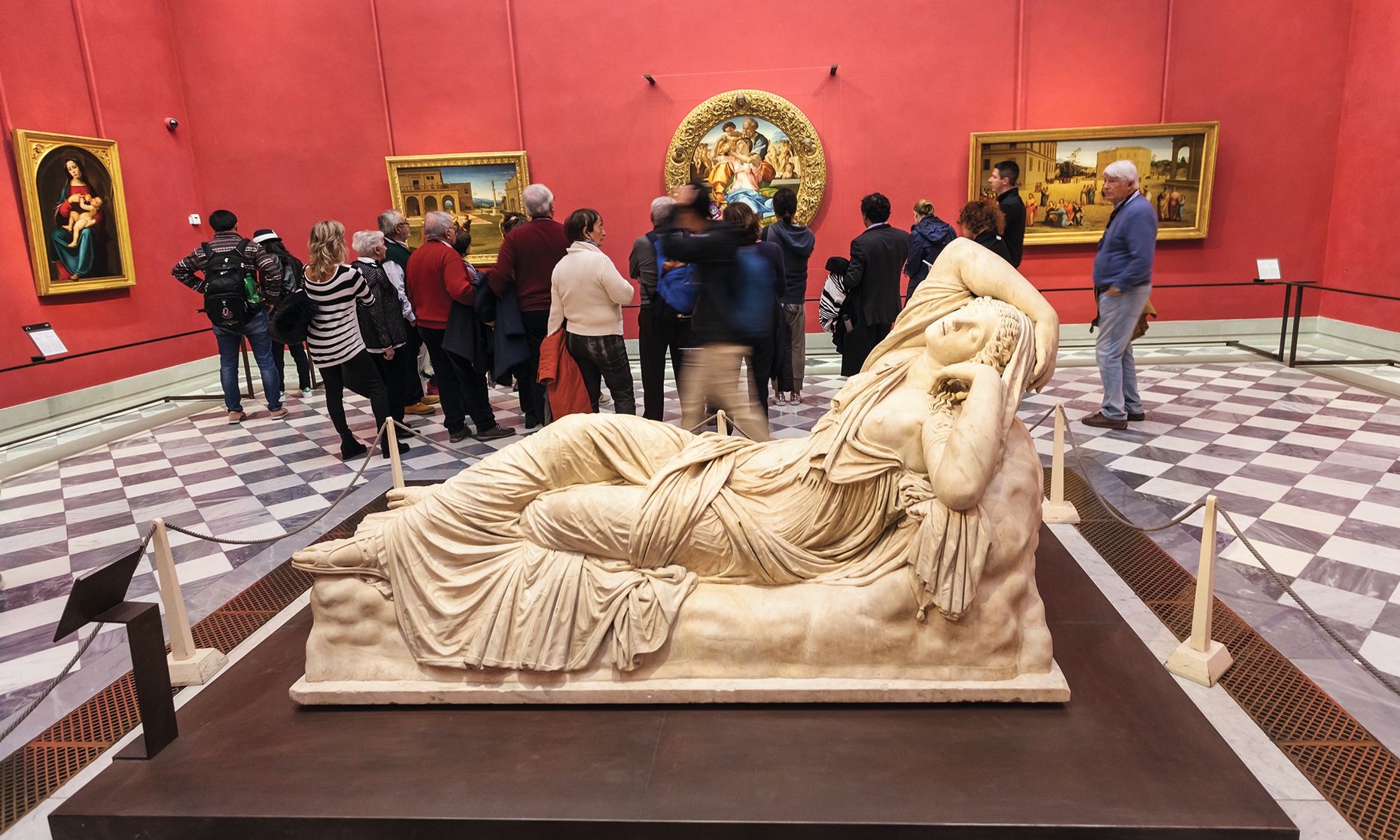The Uffizi has increased the price of a full-price ticket by 25%
© VVOE
The Uffizi Galleries have hiked their ticket prices because of pressures from rising energy prices, while a study shows that museums across the country are charging more for entry. Gennaro Sangiuliano, the Italian culture minister, suggested the increases were justified because Italian museums charge less than their European counterparts, sparking a debate about how much people should be asked to pay for culture.
The Uffizi, Italy’s most visited museum, announced on 10 January that full-price tickets would cost €25 during the high season (1 March to 30 November), up from €20. Early-bird visitors will pay €19 from 8.15am to 8.55am. Prices for low-season tickets remain unchanged.
The new tariffs would help “address rising costs in energy and building sectors”, according to a press release issued by the Uffizi. “We had to rethink our pricing plan if we wanted to complete all of the projects we have on our agenda,” a museum spokesman says.
As elsewhere in Europe, energy prices have soared since Russia’s invasion of Ukraine, with the average Italian family paying over €150 on gas in December 2022, up from around €67 two years earlier, according to the ARERA state-run energy regulator. The average gas bill had dropped to €85 by last month.
Some institutions have struggled, with city-run museums in Bra in Piedmont closing for two months “to limit energy consumption”, according to a press release. A survey by the website Altroconsumo found that Italian museums increased prices by 10% last year, with those in Naples hiking theirs by 33%.
The Italian culture minister Gennaro Sangiuliano says museum visitors should be prepared to pay for “intrinsic and historical value”
Photo: Massimo Di Vita/Mondadori Portfolio/Sipa USA
However, Rome’s culture assessor told journalists on 12 January that city-run museums in the capital would not raise prices “because we are focused on improving our services”. Cecilie Hollberg, the director of the Galleria dell’Accademia in Florence, says: “I will not increase prices; no increase is foreseen. That wouldn’t be correct”.
The culture ministry announced in September that €40m would be allocated to helping cultural institutions cope with rising costs. A quarter of the total is earmarked for museums.
Sangiuliano told journalists attending the opening of the House of the Vettii at Pompeii, on the same day as the Uffizi announcement, that tariff increases were justified. “We need to conform to European standards. At the moment, the great European museums on average cost more, with the exception of the UK,” the minister said. “If something has an intrinsic and historical value, it must be paid for.”
Italian publications subsequently noted that many of Europe’s most visited museums have lower entry fees than the Uffizi, with the Prado in Madrid charging €15, the Louvre in Paris €17, the Pergamonmuseum in Berlin €12 and the Van Gogh Museum in Amsterdam €20.
Sangiuliano clarified his position in a radio interview, saying reports that Italy’s biggest museums would raise prices was “gigantic fake news”. He added: “So far only the Uffizi, and maybe Pompeii, intend to reconsider their prices”. Challenged that European museums do not charge more than their Italian counterparts, Sangiuliano said: “in some cases our museums have a lower price”.
Tomaso Montanari, a left-wing art historian and commentator, pointed out that while the minister had initially embraced the idea of price increase, to demonstrate that the right-wing government represents the interest of Italians, he was forced to modify his position when told that the country’s museums are not necessarily cheaper to visit than those elsewhere in Europe. “Initially, he wanted to emphasise that Italy has the best cultural heritage in the world, and make the point that Italians come first by suggesting that foreigners would be paying more,” Montanari said. “Then he noted his error and slammed on the brakes.”
The website Money.it published a survey earlier this year asking Italians whether ticket prices should be increased. While 54% thought they should not and 19% replied that museums should be free, 22% supported increases to better finance institutions, with just 5% saying they agreed they were needed to bring Italian prices in line with those of Europe.
In his radio interview, Sangiuliano explained that Italy’s biggest state-funded museums, to which the government awarded greater autonomy in 2014, set their own prices, adding that his department had increased the number of days when public museums can be visited for free.

